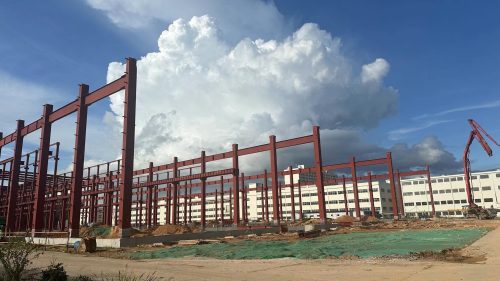Steel Frame Systems for steel buildings are the structural skeletons that support the entire load of the building, transfer forces to the foundation, and define its shape. In steel construction, these systems are chosen based on span requirements, load conditions, building use, and cost.
Rigid Frame System
-
Description: Primary beams and columns are rigidly connected, resisting both vertical and horizontal loads.
-
Features: Strong, stable, ideal for large spans without interior columns.
-
Applications: Warehouses, factories, aircraft hangars.
-
Span Range: 20–90 m.
Braced Frame System
-
Description: Steel members form triangular configurations (bracing) to resist lateral loads.
-
Types: X-bracing, K-bracing, Chevron (V) bracing.
-
Features: Economical, less steel consumption, but may reduce interior flexibility.
-
Applications: Industrial plants, multi-story buildings.
Moment-Resisting Frame
-
Description: Relies on rigid connections (welded or bolted) between beams and columns to resist bending and shear without bracing.
-
Features: Flexible interior layouts, better aesthetics, higher cost than braced frames.
-
Applications: Office buildings, commercial spaces.
Truss Frame
-
Description: Uses triangular truss assemblies to span large distances.
-
Features: Efficient in material use, can create long spans with minimal weight.
-
Applications: Sports arenas, auditoriums, roof systems.
Modular / Light Gauge Steel Frame
-
Description: Made from cold-formed steel sections for smaller structures.
-
Features: Lightweight, fast assembly, best for small-scale or modular buildings.
-
Applications: Residential houses, portable cabins.



